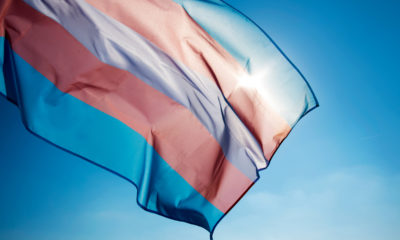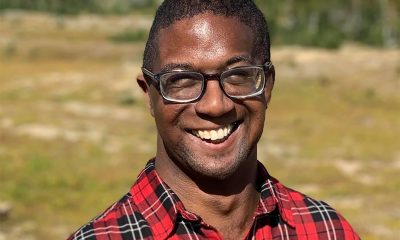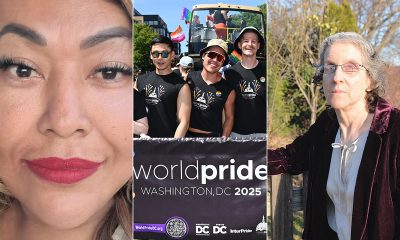Local
Robinson raising money for Dupont church
Gay bishop calls St. Thomas his ‘home away from home’
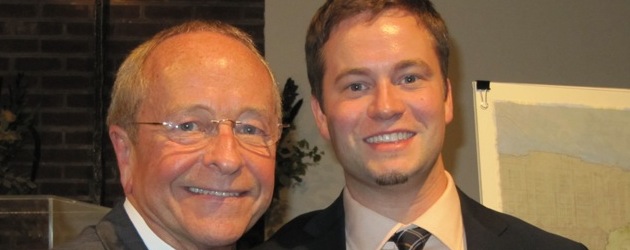
Editor’s note: Go here for the Blade’s Q&A with Robinson.
The Episcopal Church’s first out gay bishop joined more than 100 members and guests in a Saturday reception at D.C.’s St. Thomas’ Parish near Dupont Circle to promote plans for rebuilding the church’s sanctuary, which was destroyed by fire 40 years ago.
V. Gene Robinson, who was elected bishop of the Episcopal Diocese of New Hampshire in 2003, called the LGBT-welcoming church “my home away from home.” He said he would play an active role in fundraising efforts to cover the costs for the new church building.
“This congregation reaches out to all of God’s children without shame, without apology,” he told the gathering during the reception, in which a model and several drawings of the proposed new building were displayed.
In an interview after the reception, Robinson told the Blade that St. Thomas’ long history of embracing progressive causes, including LGBT equality and its status as one of the first D.C. area churches to perform blessings of same-sex unions, were examples of how the Christian church in many ways has changed for the better.
“You know, asking an LGBT person to go back to the church that has been the source of so much pain and abuse is a little like asking an abused spouse to go back to her husband,” he said.
“The fact of the matter is in many places the church is changing. And the church realizes that for years it got it wrong about LGBT people,” he said. “And what I love about St. Thomas’ Parish is that it is really leading the way in that kind of radically inclusive message.”
The original St. Thomas’ Church, a distinctive English Gothic structure, first opened in 1893 at 18th and Church streets, N.W. Among its most famous parishioners were President Franklin Roosevelt and first lady Eleanor Roosevelt.
Current church officials say that by the late 1960s, the church had become known as a welcoming place for residents and visitors in the diverse, changing neighborhood of Dupont Circle, where gays, hippies, and anti-Vietnam War protesters, among others, had settled in the then-inexpensive apartments and townhouses.
The church’s mix of new and longtime residents of the Dupont Circle area reacted with sadness and resolve in August 1970, according to current members, when the church was destroyed by a fire that authorities listed as arson. The exterior stone structure remained standing, but city building officials declared it an imminent safety hazard, forcing the congregation to suffer the additional trauma of paying for the demolition of their cherished place of worship.
The perpetrator or perpetrators of the arson were never identified.
For the past 40 years the congregation has worshiped in an adjacent building on Church Street, which members converted from the original church hall to a new sanctuary. The site of the demolished church building was transformed into a park, with the ruins of one of the church walls left standing as a monument to the congregation’s will to persevere.
“We are a community of radical hospitality,” St. Thomas’ rector, Rev. Dr. Nancy Lee Jose, said in a statement. “That means we invite everyone not only to belong, but to participate fully in all levels of parish life and leadership.”
The contemporary new structure will consist of an 8,500-square-foot sanctuary seating 275 people, according to literature released by the congregation. It will be built on the park where the original church stood and will incorporate within its walls the “Gothic High Altar” from the ruins of the old church, which will serve as a chapel, the literature says.
Matthew Jarvis, 33, the lead architect of the building, who is gay, said his design was inspired by the church’s history and the diversity of its members.
“The essence, if there is one, is that it embodies openness, transparency, and inclusivity in a physical building to match the theology of the people,” he said.
John Johnson, St. Thomas’ senior warden, a volunteer administrative post, said the total cost of the new church building is expected to come to $5.1 million.
He said funds for the new building will be raised through pledges by parishioners, a $2.9 million external fundraising campaign, the sale of a church rectory building located nearby and existing funds obtained from an insurance payout from the fire.
Robinson, whose election to the post of Bishop triggered a tumultuous debate within the Episcopal Church in the U.S. and abroad, said the church has taken a “dramatic step forward” in the years since his election.
He said many people, including gays, who have left the church due to a perceived anti-LGBT bias may not be fully aware of these changes.
“And so I would say to the gay community, take another look,” he said. “The church you left may be different now. And certainly St. Thomas is modeling I think the kind of inclusive love that God is all about.”
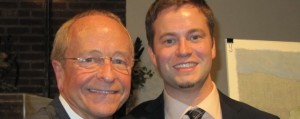 Gay Episcopal Bishop Gene Robinson (left) and Matthew Jarvis, the lead architect of the new St. Thomas building, who is also gay, attended a meeting on Saturday to unveil plans for the church. (Photo by Colleen Dermody)
Gay Episcopal Bishop Gene Robinson (left) and Matthew Jarvis, the lead architect of the new St. Thomas building, who is also gay, attended a meeting on Saturday to unveil plans for the church. (Photo by Colleen Dermody)
Rehoboth Beach
Rehoboth’s Blue Moon is for sale but owners aim to keep it in gay-friendly hands
$4.5 million listing includes real estate; business sold separately
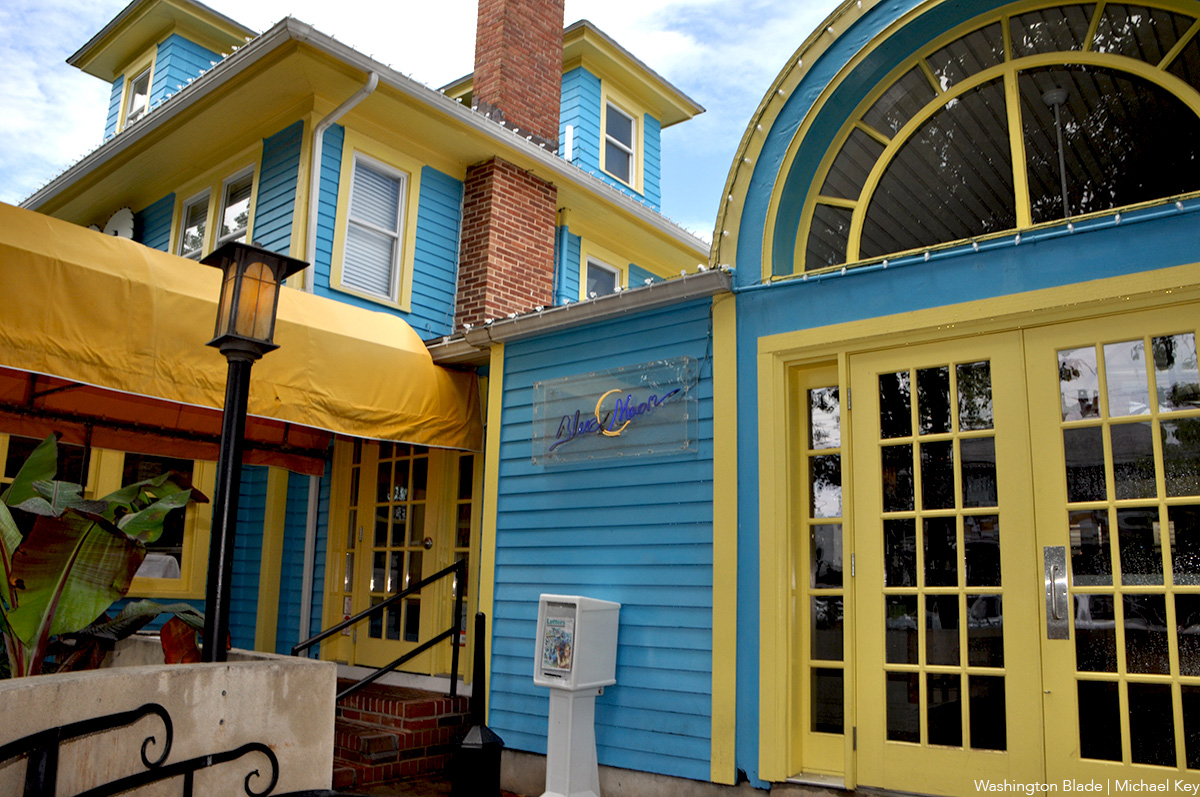
Gay gasps could be heard around the DMV earlier this week when a real estate listing for Rehoboth Beach’s iconic Blue Moon bar and restaurant hit social media.
Take a breath. The Moon is for sale but the longtime owners are not in a hurry and are committed to preserving its legacy as a gay-friendly space.
“We had no idea the interest this would create,” Tim Ragan, one of the owners, told the Blade this week. “I guess I was a little naive about that.”
Ragan explained that he and longtime partner Randy Haney are separating the real estate from the business. The two buildings associated with the sale are listed by Carrie Lingo at 35 Baltimore Ave., and include an apartment, the front restaurant (6,600 square feet with three floors and a basement), and a secondary building (roughly 1,800 square feet on two floors). They are listed for $4.5 million.
The bar and restaurant business is being sold separately; the price has not been publicly disclosed.
But Ragan, who has owned the Moon for 20 years, told the Blade nothing is imminent and that the Moon remains open through the holidays and is scheduled to reopen for the 2026 season on Feb. 10. He has already scheduled some 2026 entertainment.
“It’s time to look for the next people who can continue the history of the Moon and cultivate the next chapter,” Ragan said, noting that he turns 70 next year. “We’re not panicked; we separated the building from the business. Some buyers can’t afford both.”
He said there have been many inquiries and they’ve considered some offers but nothing is firm yet.
Given the Moon’s pioneering role in queering Rehoboth Beach since its debut 44 years ago in 1981, many LGBTQ visitors and residents are concerned about losing such an iconic queer space to redevelopment or chain ownership.
“That’s the No. 1 consideration,” Ragan said, “preserving a commitment to the gay community and honoring its history. The legacy needs to continue.” He added that they are not inclined to sell to one of the local restaurant chains.
You can view the real estate listing here.
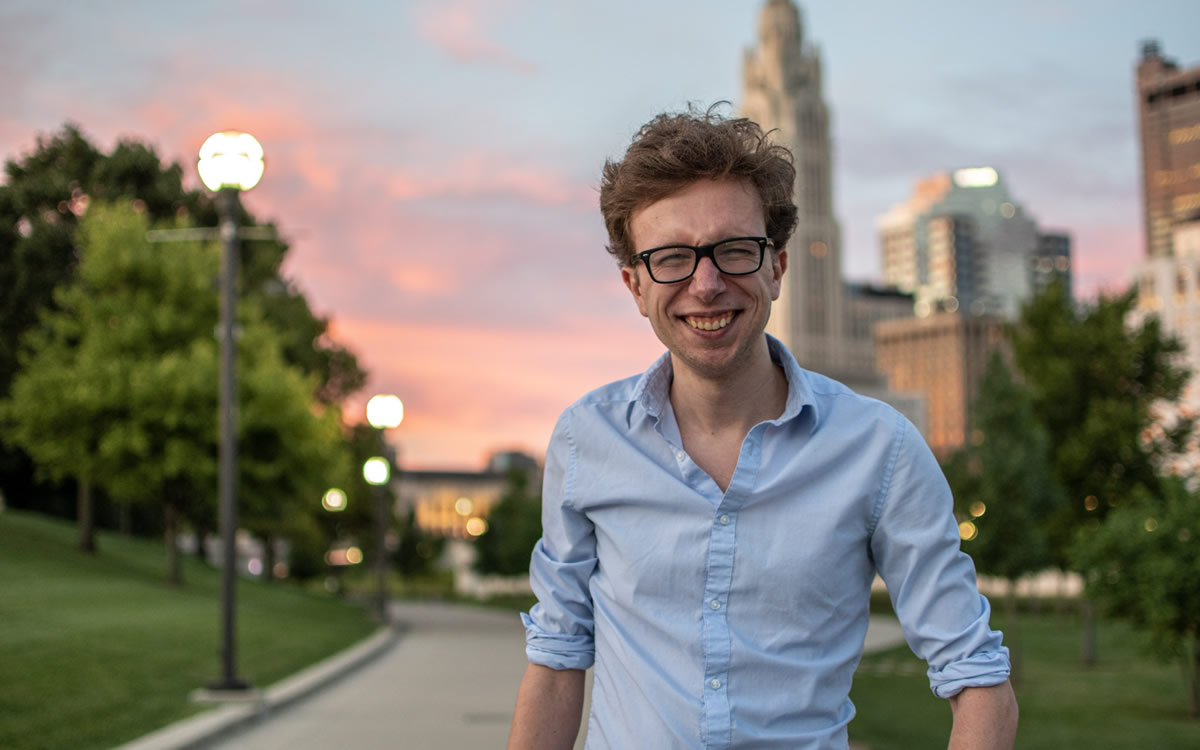
The Comings & Goings column is about sharing the professional successes of our community. We want to recognize those landing new jobs, new clients for their business, joining boards of organizations and other achievements. Please share your successes with us at [email protected].
Congratulations to Tristan Fitzpatrick on his new position as Digital Communications Manager with TerraPower. TerraPower creates technologies to provide safe, affordable, and abundant carbon-free energy. They devise ways to use heat and electricity to drive economic growth while decarbonizing industry.
Fitzpatrick’s most recent position was as Senior Communications Consultant with APCO in Washington, D.C. He led integrated communications campaigns at the fourth-largest public relations firm in the United States, increasing share of voice by 10 percent on average for clients in the climate, energy, health, manufacturing, and the technology. Prior to that he was a journalist and social media coordinator with Science Node in Bloomington, Ind.
Fitzpatrick earned his bachelor’s degree in journalism with a concentration in public relations, from Indiana University.
Congratulations also to the newly elected board of Q Street. Rob Curis, Abigail Harris, Yesenia Henninger, Stu Malec, and David Reid. Four of them reelected, and the new member is Harris.
Q Street is the nonprofit, nonpartisan, professional association of LGBTQ+ policy and political professionals, including lobbyists and public policy advocates. Founded in 2003 on the heels of the Supreme Court’s historic decision in Lawrence v. Texas, when there was renewed hope for advancing the rights of the LGBTQ community in Washington. Q Street was formed to be the bridge between LGBTQ advocacy organizations, LGBTQ lobbyists on K Street, and colleagues and allies on Capitol Hill.
District of Columbia
New queer bar Rush beset by troubles; liquor license suspended
Staff claim they haven’t been paid, turn to GoFundMe as holidays approach

The D.C. Alcoholic Beverage and Cannabis Board on Dec. 17 issued an order suspending the liquor license for the recently opened LGBTQ bar and nightclub Rush on grounds that it failed to pay a required annual licensing fee.
Rush held its grand opening on Dec. 5 on the second and third floors of a building at 2001 14 Street, N.W., with its entrance around the corner on U Street next to the existing LGBTQ dance club Bunker.
It describes itself on its website as offering “art-pop aesthetics, high-energy nights” in a space that “celebrates queer culture without holding back.” It includes a large dance floor and a lounge area with sofas and chairs.
Jackson Mosley, Rush’s principal owner, did not immediately respond to a phone message from the Washington Blade seeking his comment on the license suspension.
The ABC Board’s order states, “The basis for this Order is that a review of the Board’s official records by the Alcoholic Beverage and Cannabis Administration (ABCA) has determined that the Respondent’s renewal payment check was returned unpaid and alternative payment was not submitted.”
The three-page order adds, “Notwithstanding ABCA’s efforts to notify the Respondent of the renewal payment check return, the Respondent failed to pay the license fee for the period of 2025 to 2026 for its Retailer’s Class CT license. Therefore, the Respondent’s license has been SUSPENDED until the Respondent pays the license fees and the $50.00 per day fine imposed by the Board for late payment.”
ABCA spokesperson Mary McNamara told the Blade that the check from Rush that was returned without payment was for $12,687, which she said was based on Rush’s decision to pay the license fee for four years. She said that for Rush to get its liquor license reinstated it must now pay $3,819 for a one-year license fee plus a $100 bounced check fee, a $750 late fee, and $230 transfer fee, at a total of $4,919 due.
Under D.C. law, bars, restaurants and other businesses that normally serve alcoholic beverages can remain open without a city liquor license as long as they do not sell or serve alcohol.
But D.C. drag performer John Marsh, who performs under the name Cake Pop and who is among the Rush employees, said Rush did not open on Wednesday, Dec. 17, the day the liquor board order was issued. He said that when it first opened, Rush limited its operating days from Wednesday through Sunday and was not open Mondays and Tuesdays.
Marsh also said none of the Rush employees received what was to be their first monthly salary payment on Dec. 15. He said approximately 20 employees set up a GoFundMe fundraising site to raise money to help sustain them during the holiday period after assuming they will not be paid.
He said he doubted that any of the employees would return to work in the unlikely case that Mosley would attempt to reopen Rush without serving liquor or if he were to pay the licensing fee to allow him to resume serving alcohol without having received their salary payment.
As if all that were not enough, Mosley would be facing yet another less serious problem related to the Rush policy of not accepting cash payments from customers and only accepting credit card payments. A D.C. law that went into effect Jan. 1, 2025, prohibits retail businesses such as restaurants and bars from not accepting cash payments.
A spokesperson for the D.C. Department of Licensing and Consumer Protection, which is in charge of enforcing that law, couldn’t immediately be reached to determine what the penalty is for a violation of the law requiring that type of business to accept cash payments.
The employee GoFundMe site, which includes messages from several of the employees, can be accessed here.
Mosley on Thursday responded to the reports about his business with a statement on the Rush website.
He claims that employees were not paid because of a “tax-related mismatch between federal and District records” and that some performers were later paid. He offers a convoluted explanation as to why payroll wasn’t processed after the tax issue was resolved, claiming the bank issued paper checks.
“After contacting our payroll provider and bank, it was determined that electronic funds had been halted overnight,” according to the statement. “The only parties capable of doing so were the managers of the outside investment syndicate that agreed to handle our stabilization over the course of the initial three months in business.”
Mosley further said he has not left the D.C. area and denounced “rumors” spread by a former employee. He disputes the ABCA assertion that the Rush liquor license was suspended due to a “bounced check.” Mosley ends his post by insisting that Rush will reopen, though he did not provide a reopening date.
-

 Politics2 days ago
Politics2 days agoLGBTQ Democrats say they’re ready to fight to win in 2026
-

 District of Columbia2 days ago
District of Columbia2 days agoBrian Footer suspends campaign for Ward 1 D.C. Council seat
-

 Chile4 days ago
Chile4 days agoFar-right José Antonio Kast elected Chile’s next president
-

 Opinions2 days ago
Opinions2 days agoLighting candles in a time of exhaustion

